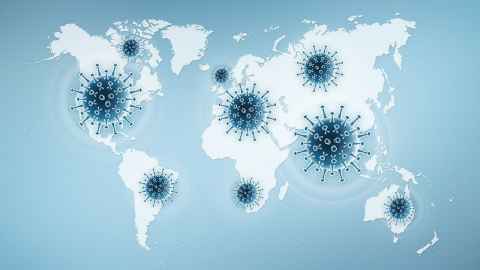Covid-19 modelling at ABI
A group of computational scientists and engineers from Auckland Bioengineering Institute are modelling Covid-19 transmission and infection in New Zealand.

SEIR model
Soroush Safaei, Mahsa Momtahan and Anand Rampadarath are leading the work on CellML modelling using OpenCOR. These models (which are similar to the ones used by the Otago group led by Nick Wilson, and the Auckland group led by Shaun Hendy) are population models that identify groups of people who are either susceptible (S), exposed/infected (E), infectious (I: either asymptomatic, symptomatic but untested, or confirmed), recovered (R) or have died from the virus (D). The model is then a set of ODEs that represent the transition from one state to another. The predictions of these models are very dependent on assumptions about those transition rates. Soroush, Mahsa and Anand have also been implementing infected clusters and quarantined subgroups within the overall population model, as well as subgroups representing different levels of patient vulnerability.
Agent based models
Geoff Handsfield and Mahyar Osanlouy are reviewing and implementing agent based models that allow much greater granularity and assigned probabilities for person-to-person interaction.
SEIR/ABM interaction
Gonzalo Maso Talou is looking at how the two types of model can interact – e.g. the refined AB Models can inform the parameter value for the transition rates in the SEIR models.
Automated data updates and simulation
Mahyar and Alan Garny have written Python scripts to extract daily data updates from the Ministry of Health and feed these straight into OpenCOR for running simulations with the new data.
Display website
Andre (David Nickerson) and David Brooks are establishing a website that will display results of the modelling, including Google-style maps that indicate predictions of regional transmission in NZ. We will also make the models available for other groups around the world to download and adjust to their local conditions.
Peter and Merryn are helping to coordinate the effort and at some point link these models to other health-status models for people with respiratory conditions. We are hoping that this effort will help with Government decision making around the easing of the lockdown in a few weeks from now.